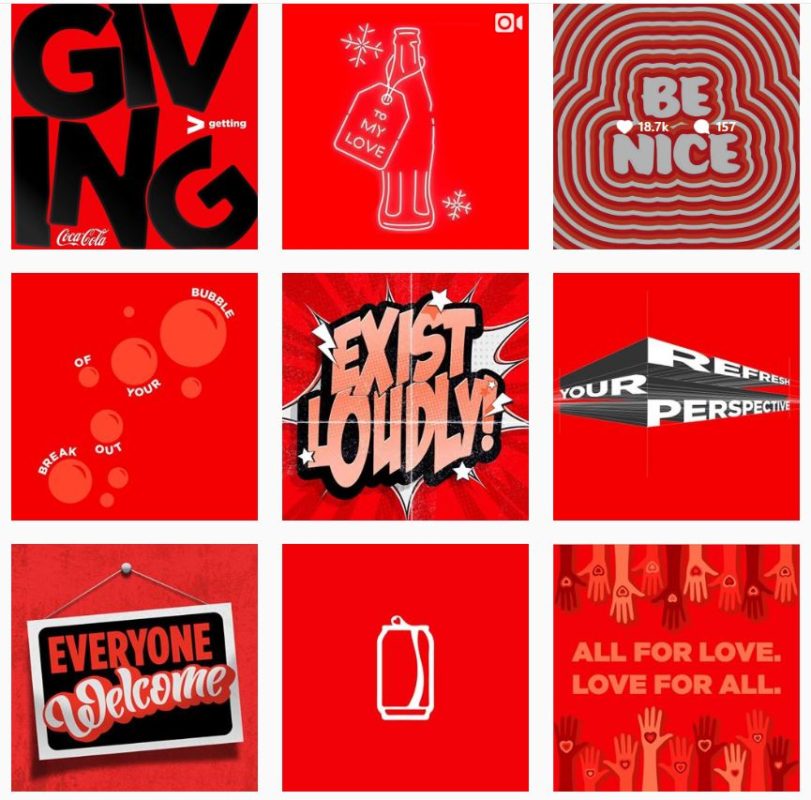A month ago, on November 13, Coca Cola completely revamped on its social media presence for World Kindness Day. It removed all previous posts and posted many positive, inspirational items. This is the gallery of Instagram images, and the posts on Twitter and Facebook were similar.

“This is a really great moment in time for us to reset, holistically, our social strategy on the Coke brand handles,” Sarah Traverso, group director, Social Center at Coca-Cola, said. “World Kindness Day feels like such an appropriate day and moment to kick off messages of positivity, but also when you look at Coke and what Coke stands for, Coke really is a brand about optimism, uplift and wants to bring people together in moments of connection.”
Engagement with the posts was the usual very low level that you see on social media – well under 1% of their followers.
This is a pure brand play, of course. Coke wants consumers to identify those qualities of optimism and kindness with the brand. Like many consumer products, people aren’t buying Coke based on its features and benefits. Aside from the taste, they have an emotional connection to the brand that Coke wants to shape and reinforce.
Coke TV ads have promoted such values as sharing (a Coke) and, a commercial I especially like, their game day tailgating ad. They’ve been doing this since at least their 1971 “I’d Like to Buy the World a Coke” TV commercial .
Coca Cola has the budget to repeat these messages enough that they become associated with those values and emotions. Smaller companies, though, may need different strategies.
